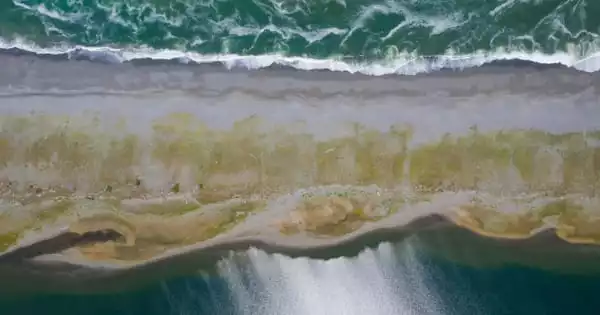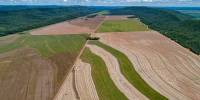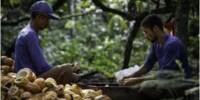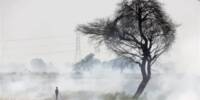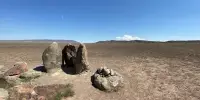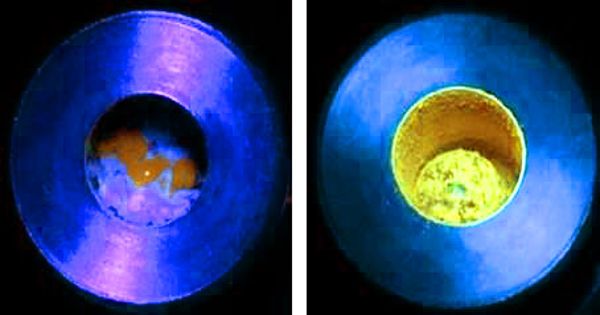In many low-productivity ecosystems around the world, particularly water- and cold-limited habitats and early-successional seres, biological soil crusts (biocrusts) develop a “living skin” at the soil surface. They can be made up of any combination of soil-surface cyanobacteria, eukaryotic algae, lichens, mosses, or liverworts, and they can sustain decomposers and a faunal food web. These soil surface communities have worldwide significance because it has recently been calculated that they cover around 12% of the terrestrial area.
Humans have a vast array of weapons in their never-ending struggle against dust, ranging from microfiber towels to feather dusters to vacuum cleaners. However, new research indicates that none of these technologies can compete with nature’s secret weapon – biological soil crusts.
These biocrusts are thin, cohesive layers of soil that are cemented together by soil-dwelling organisms and commonly cover dry terrain. Though seemingly little, experts now estimate that these rough soil skins prevent 700 teragrams (30,000 times the mass of the Statue of Liberty) of dust from blowing into the air each year, cutting worldwide dust emissions by a whopping 60%.
Biocrusts cover around 12% of the planet’s land surface and are particularly common in arid regions. Biocrusts play a vital function in concentrating nutrients such as carbon and nitrogen in dry-land ecosystems, as well as preventing soil erosion.
The future will be significantly dustier unless actions are made to conserve and repair biocrusts, which are endangered by climate change and changes in land use, report ecologist Bettina Weber and colleagues online in Nature Geoscience.
Dry-land ecosystems like savannas, shrublands, and deserts may appear desolate, but they provide a crucial natural service that is often underestimated, according to Weber of the Max Planck Institute for Chemistry in Mainz, Germany. These findings “strongly support biocrust conservation.”
Biocrusts cover around 12% of the planet’s land surface and are particularly common in arid regions. Communities of fungi, lichens, cyanobacteria, and other microorganisms that live in the top millimeters of soil and create sticky compounds that clump soil particles together build them. Biocrusts play a vital function in concentrating nutrients such as carbon and nitrogen in dry-land ecosystems, as well as preventing soil erosion.
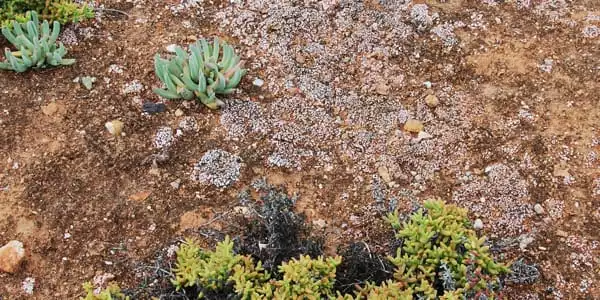
And, because dry soils produce the majority of the world’s dust, biocrusts are critical for keeping dust on the ground. Fallen dust can deliver plant nutrients, but it can also degrade water and air quality, speed glacier melting, and limit river flows. In the Upper Colorado River Basin, for example, researchers discovered that dust not only reduced snow’s capacity to reflect sunlight, but it also shortened the duration of snow cover by weeks, reducing meltwater flows into the Colorado River by 5%. According to Matthew Bowker, an ecologist at Northern Arizona University in Flagstaff who was not involved in the new study, that’s more water than the city of Las Vegas receives in a year.
Experiments had already shown that biocrusts improved soil erosion resistance, but Weber and her colleagues wanted to see how that effect played out on a global scale. So they gathered information from experimental investigations that assessed the wind speeds required to erode dust from various soil types and analyzed how differences in biocrust covering affected dust creation. They discovered that the wind speeds required to erode dust from soils totally sheltered by biocrusts were on average 4.8 times higher than the wind speeds required to erode bare soils.
The researchers then put these findings, as well as statistics on worldwide biocrust coverage, into a global climate simulation, allowing them to determine how much dust the world’s biocrusts capture each year. “No one has really attempted to make that calculation internationally before,” Bowker says. “Even if their figure is inaccurate, it demonstrates that the true number is most likely significant.”
Using future temperature forecasts and data on the conditions biocrusts can survive, Weber and her colleagues calculated that by 2070, climate change and land-use changes might result in biocrust losses of 25 to 40%, increasing global dust emissions by 5 to 15%.
Bowker believes that preserving and repairing biocrusts will be critical in the future to reducing soil erosion and dust production. He hopes that the findings will spark greater debate on the effects of land-use changes on biocrust health. “We need to have those discussions.”
